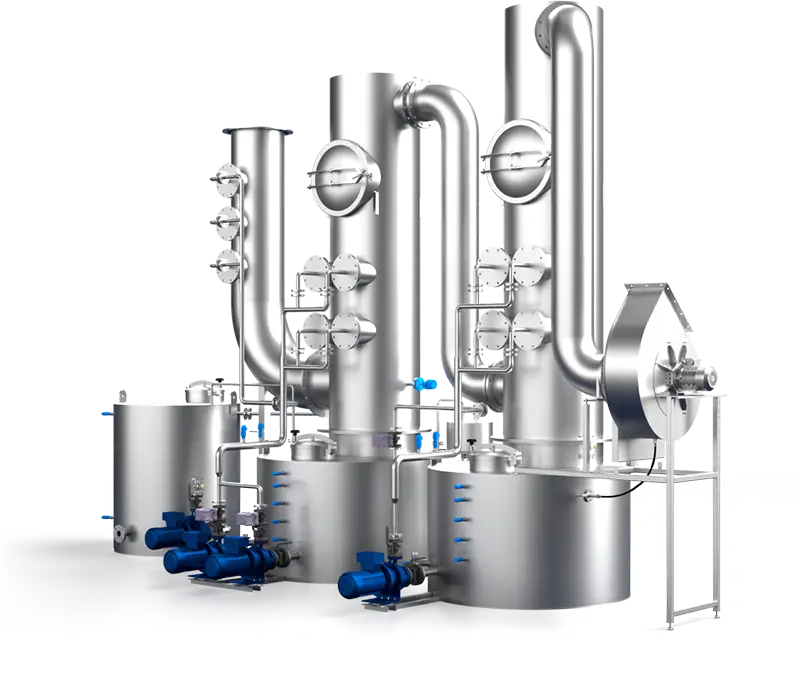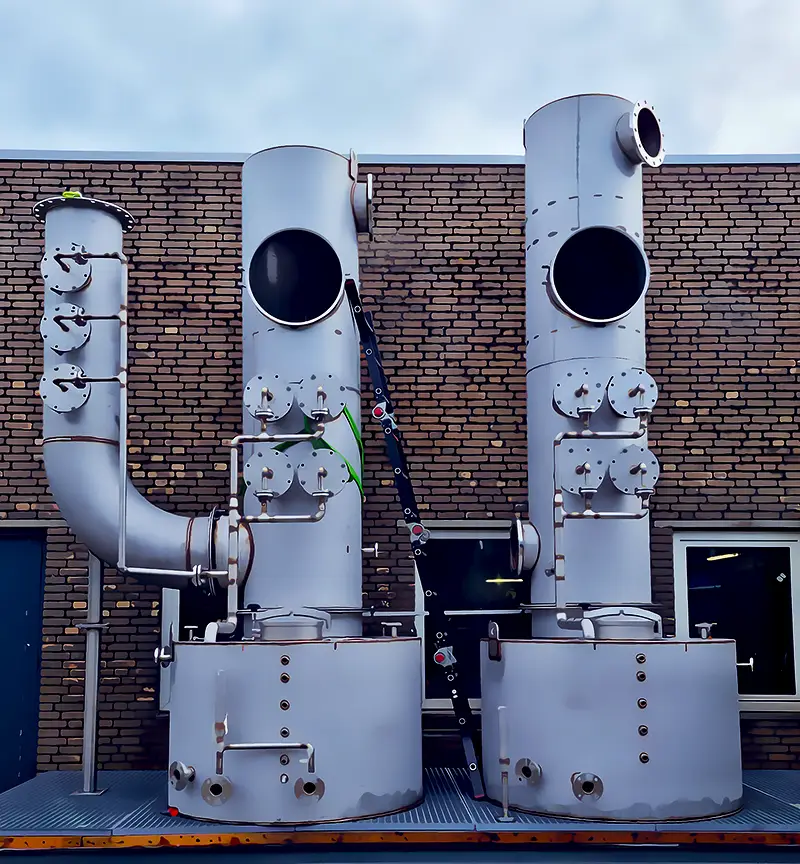Custom-Built Industrial Scrubbers for Your Application
The Essential Function: Gas Purification
 An industrial scrubber is a critical system designed to separate and purify gas streams, effectively eliminating water-soluble inorganic pollutants from gas pipes. The core principle is absorption, where soluble components from a gas mixture dissolve into a low-volatility liquid. This process can be either physical or chemical, with its efficiency depending on several key factors.
An industrial scrubber is a critical system designed to separate and purify gas streams, effectively eliminating water-soluble inorganic pollutants from gas pipes. The core principle is absorption, where soluble components from a gas mixture dissolve into a low-volatility liquid. This process can be either physical or chemical, with its efficiency depending on several key factors.
Effective mass transfer between the gas and liquid phases relies on exposed surface area, contact time, gas solubility, and chemical reactivity. Well-designed industrial scrubbers guarantee extensive gas-solvent interaction to absorb contaminants efficiently, ensuring your emissions comply with all regulations.
Get in touch with us
Our Industrial Scrubber Systems & Configurations
 To provide the most effective solution, we offer various scrubber configurations. While many of our systems are based on the highly efficient countercurrent principle, we can engineer the optimal design for your specific needs, including cross-current and co-current flows.
To provide the most effective solution, we offer various scrubber configurations. While many of our systems are based on the highly efficient countercurrent principle, we can engineer the optimal design for your specific needs, including cross-current and co-current flows.
Our range of high-performance absorption systems includes:
- Packed Towers: These towers are loaded with specialized packing material to dramatically increase the liquid-to-gas contact surface. They offer superior removal efficiency, can withstand high fluid velocities, and are relatively water-efficient.
- Tray Columns: In these systems, liquid and gas come into sequential contact on a series of trays. Tray columns are robustly built, typically from stainless steel, and offer reliable performance.
- Venturi Scrubbers: The ideal choice for applications requiring the removal of particulate matter, such as dust, alongside gaseous pollutants like sulfur dioxide. They are known for creating a significant pressure drop to achieve high collection efficiency.
- Open-Spray Columns: These systems are simple to operate, require minimal maintenance, and consume very little power. They work on the principle of potential energy differences as liquid droplets are distributed through a nozzle system into the gas stream.
Why Choose a Custom Industrial Scrubber from Ravebo?
While standard systems exist, a custom-made industrial scrubber from Ravebo is engineered to solve your specific challenge, providing significant advantages in performance, reliability, and integration.
- Guaranteed Performance: We design your scrubber based on your exact gas flow, temperature, and pollutant composition to guarantee optimal removal efficiency.
- Optimal Footprint: Our systems are designed to fit perfectly within your existing plant layout, respecting spatial limitations.
- Material Excellence: We select the ideal construction materials (e.g., stainless steel, composites) to handle corrosive, abrasive, or high-temperature gas streams, ensuring a long operational life.
- Full Compliance: We ensure your system meets and exceeds all relevant environmental regulations and emission standards, giving you peace of mind.
If you have a complication or need a reliable emission control solution, we would be happy to discuss the possibilities. Fill in the contact form, and our engineers will get in touch with you shortly.
